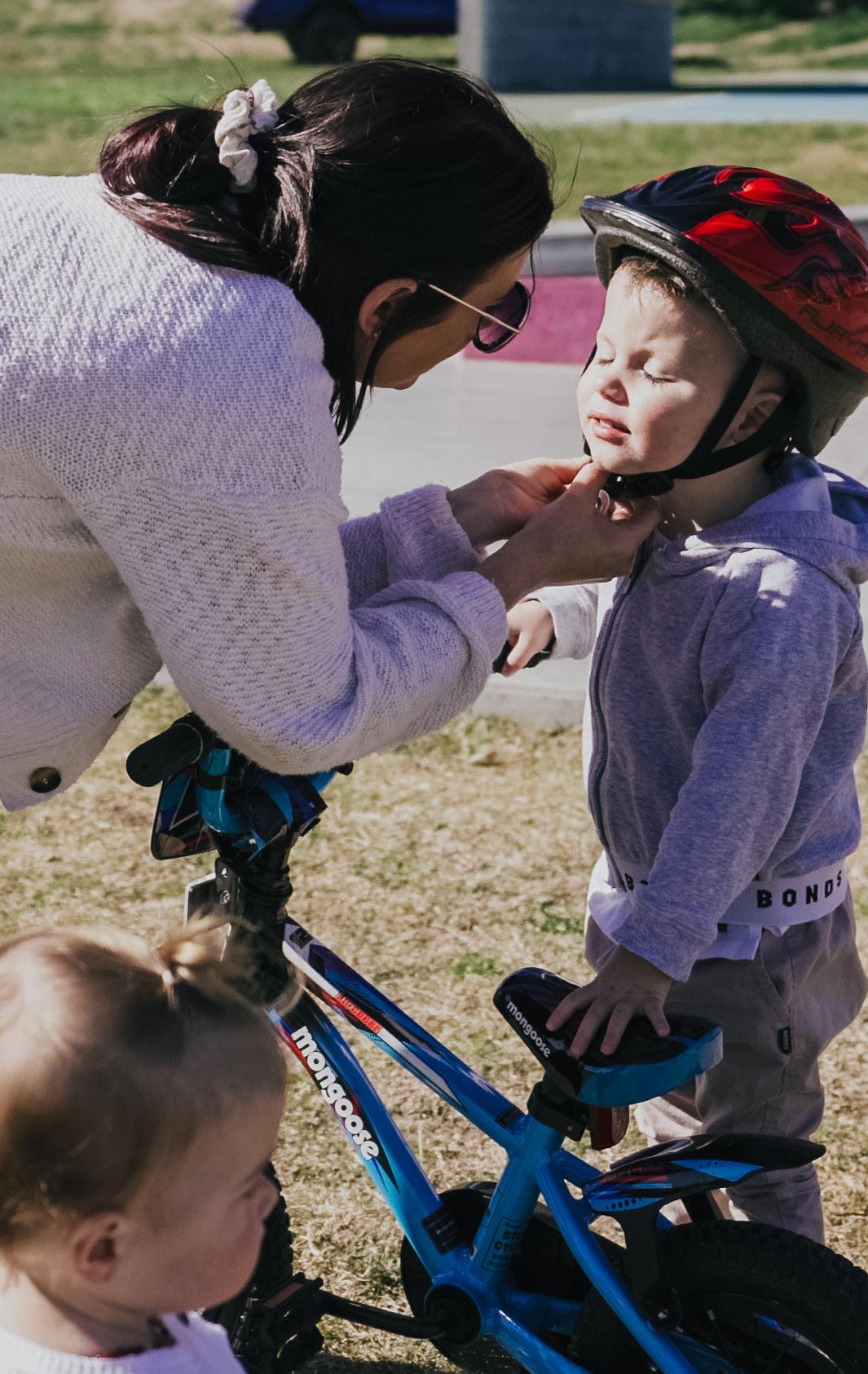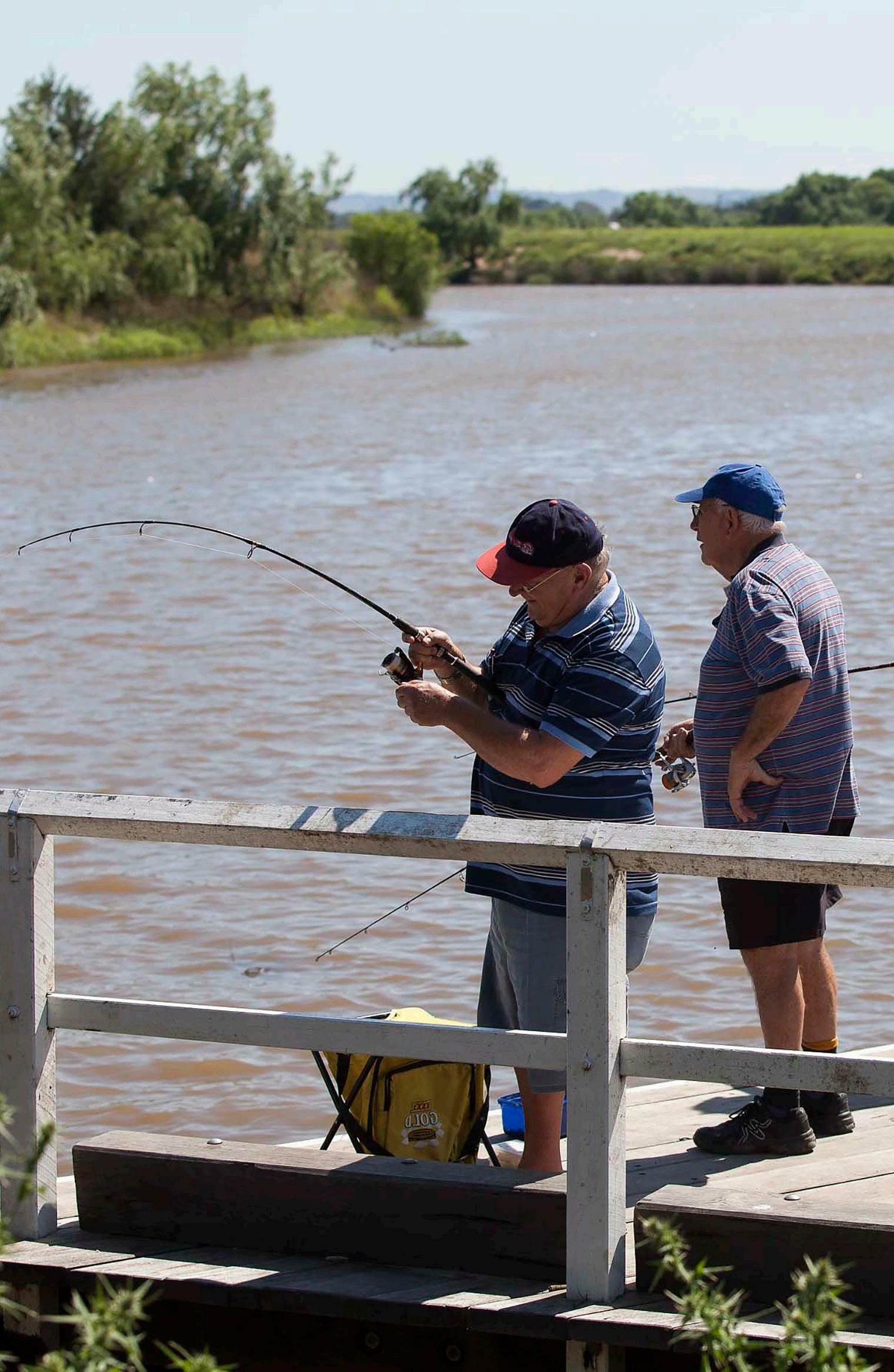
9 minute read
Legislative requirements
The Communication and Engagement Strategy has been prepared in accordance with Section 402A of the Local Government Act 1993, Environmental Planning and Assessment Act 1979, our Community Engagement Policy and responds to the requirements of NSW Government Integrated Planning and Reporting Framework (IPR).
What is IPR?
IPR allows councils to bring plans and strategies together in a way that supports a clear vision for the future and provides an agreed direction for delivering community priorities and aspirations.
Communication and Engagement Strategy
Effective engagement allows communities to be active participants in shaping their own future and play a part in positive change. We are required to prepare a Community Engagement Strategy to support the development of all plans, policies, programs and key activities. This includes those relating to IPR, as well as strategic plans and programs required under other legislation. The Communication and Engagement Strategy is reviewed in line with Council elections and IPR requirements.
Maitland +10
Maitland +10 is our highest level plan. This plan is developed with and on behalf of the community. Its purpose is to identify the main priorities and aspirations for the future and to plan strategies for achieving these goals.
Community outcomes
Community engagement Partners
Individuals, community groups, businesses, government and nongovernment agencies
Informing strategies
E.g Local Strategic Planning Statement; Destination Management Plan
Resourcing Strategy
Long Term Financial Plan Asset Management Strategy Workforce Management Plan
Community Outcomes Community aspirations
State and Regional plans and strategies
Maitland+10
Ten year outlook
Community objectives
Community strategies
Delivery Program
Four year outlook
Council objectives
Council services
Council major projects
Operational Plan
One year outlook
Council annual actions
Council annual budget
Community engagement
State of the City report
Regular progress reports
Annual report
Community engagement
What is the current situation?
Reason for the review
Our key goal was to get a better understanding of your needs and wants to set a clear direction for our communication and engagement. To achieve this, we have undertaken a range of activities to hear from local people and which has helped us identify: • The ways in which the community want to be kept informed on project works and news • Topics and themes our community want to hear more about and have a say in • What level of engagement residents currently have in Council projects • The preferred ways in which the community want to be engaged • Barriers that prevent the community from engaging more fully.
Who we are
Total population 90,226
9%
born overseas
8%
Aboriginal and Torres Strait Islanders
86%
of households have an internet connection (2016 Census) Median age 36
7%
speak a non English language at home
51.3%
female
94%
of Australians own a smart phone NSW median age 38
7%
need for assistance
48.7%
male
76% of Australians have a Facebook account
How we engaged
To help develop this Strategy we held engagement activities across the City, which included phone surveys, online polling and surveys, workshops and focus groups, pop up events and meetings. Here is a summary of our journey.
APRIL – MAY 2022
Community Satisfaction Survey phone polling 600 plus from a representative population sample
JULY 2022
Community Satisfaction Survey focus groups 25 participants across three workshops
AUGUST – SEPTEMBER 2022
Over 500 community members contributed input or completed a survey, attended a pop up stand event or participated in a workshop.
SEPTEMBER –OCTOBER 2022
Draft Strategy developed
AUGUST 2022
Councillor and staff workshops
NOVEMBER 2022
Council endorsement of Strategy and action implementation
OCTOBER – NOVEMBER 2022
Public Exhibition
What you told us
Here’s some key insights we heard from you.
‘On social media we are very well informed.’
Over half our population (54%) have contacted Council in the last 12 months
55% of those surveyed haven’t participated in engagement opportunities because they didn’t know they could or how to get involved.
43% want to be more actively engaged with Council’s projects 86% of residents are at least satisfied with Council’s level of communication
Council’s website is the most commonly used platform to seek information about Council (56%)
Preferred ways to provide input into Council planning are via surveys and social media quick polls
LOCAL PROJECTS AND SERVICES
27%
Feel informed
49%
24%
Feel somewhat informed
Don’t feel informed
Our stakeholders
We all have a role to play in shaping the places we live, work and play. There are roles for both Council and the community in initiating, leading, participating in, and delivering, engagement activities. A vital component of our community engagement process includes identifying and understanding key stakeholders who will be impacted by, or who have an interest in, a decision.
STAKEHOLDER GROUP EXAMPLES
RESIDENTS AND RATEPAYERS
Those who live and/or pay rates in the Maitland Local Government Area
COMMUNITY OF INTEREST
GOVERNMENT AGENCIES
COMMITTEES AND COMMUNITY ORGANISATIONS

POPULATION GROUPS
HARD TO REACH POPULATIONS
BUSINESS COMMUNITY
SCHOOLS
Those communities who are directly or indirectly affected by a project, such as a specific suburb or area
Departments of local, state and federal government whom Council advises and seeks advice from about projects
Committees or organisations with a specific interest in, or knowledge of, a particular matter such as the Local Aboriginal Land Council, environment groups, the access and inclusion reference group, or sporting clubs
Specific demographic groups such as age, background, ability, gender, cultural heritage
Specific groups within our community who are harder to reach, have specific needs or are generally less engaged. E.g young people
Individuals, associations or networks active in the business community
Local education centres including schools and TAFE
VISITORS/TOURISTS Individuals or groups who visit Maitland
Roles and responsibilities
MAYOR
• Act as the spokesperson for Council to promote engagement on key strategic plans, including the CSP • Together with the General Manager, ensure adequate opportunities and mechanisms for engagement between
Council and the local community • Promote partnerships.
MAYOR AND COUNCILLORS
• Promote and support community engagement on key strategic plans, including the CSP • Participate in the development of IPR documents, including the CSP • Endorse future plans on behalf of the community • Participate in community engagement activities, alongside
Council staff when possible.
GENERAL MANAGER
• Oversee preparation of the CSP and IPR documents and endorsement by the elected Council • Ensure the community is well informed to participate in the
IPR process in a meaningful way.
STAFF
• Work with and support the General Manager in the development of the Strategy and plans to engage the community • Implement the Communication and Engagement Strategy and provide advice to the General Manager on community views.

What is the purpose of this strategy?
Effective and honest engagement is at the heart of local government and the IPR process. It helps communities shape their own futures and informs the vision and direction of council. Our Communication and Engagement Strategy will support the development of all strategies, policies and services, while keeping the community informed through quality and responsive communications.
Our Guiding Principles
Our approach reflects the social justice principles of equity, access, participation and rights, as well Council’s Guiding Principles which underpin everything we do.
MAKE THINGS EASY

We deliver communication and engagement opportunities that are accessible, relevant and easy to understand
BE WELCOMING
We’re inclusive, encourage a diversity of voices to be heard, and make it easy for everyone who will be affected by a decision the opportunity to participate
BE OPEN MINDED
We embrace innovation and encourage new ideas
LOOK OUT FOR ME
We listen, value and respect community input as part of our decision making
KEEP YOUR PROMISES
We engage openly and honestly and build trust and understanding in our community, and use community input and feedback to deliver the best community outcomes
IAP2 Public Participation Spectrum
We follow the IAP2 Spectrum of Public Participation, which is an engagement framework that succinctly describes the different levels of engagement. The Spectrum guides our approach to selecting tools and channels for different stakeholders for all communication and engagement.
PUBLIC PARTICIPATION GOAL
Our role We will keep you informed We will listen, and consider your concerns
INFORM CONSULT
Community’s role • Keep in touch E.g follow Council on social media • Subscribe to newsletters • Check Councils website • Contribute ideas and feedback • Respond to surveys • Make public submissions
INVOLVE COLLABORATE
We will work with you to ensure your concerns and aspirations are reflected in the decisions made
• Actively participate in workshops and engagement sessions • Share ideas, concerns and aspirations We will look to you for advice and innovation and incorporate this in decisions as much as possible
• Work together to develop solutions • Join community panels, committees or advisory groups
What it might look like • Fact sheets • Websites • Newsletters • Social media posts • Surveys • Social media quick polls • Workshops • Pop up stands • Advisory committees • Ambassador programs
* In most cases, decisions that will impact the community are made by the elected Council unless otherwise specified as part of the engagement project or by delegation to the General Manager or other nominated Council officer. There are a range of other factors that need to be considered and balanced during the decision making process such as budget, social, economic, and environmental impacts, legislation, governance, policies, and technical advice, therefore the Empower level of participation has not been included in Council’s Community Engagement Framework.
Our key challenges and opportunities
Based on the community’s feedback, we know we’re doing pretty well but there is also room for improvement. Council needs to overcome the following challenges when undertaking communication and engagement activities: • Connecting with hard to reach groups: We need to reach certain groups such as Aboriginal and Torres Strait Islander communities and young people, and people from minority groups using unique methods to engage and inspire • Engagement fatigue: Deliver engagement as an ongoing conversation, rather than project by project to allow all members of the community the opportunity to have their values and needs reflected in Council decision making, and stagger engagement opportunities to reduce the risk of engagement fatigue • Communications is inaccessible: Communication needs to be easy to understand, easy to find, and easy to use. Engagement needs to take place in accessible locations and use both online and offline methods • Lack of awareness of engagement opportunities: We need to let our community know how and when they can contribute to the conversation • Lack of trust: We need to build trust with our community by being transparent, providing timely and accurate information, and close the loop on engagement projects so stakeholders know we’re listening and how their information is used • Families and other groups are time poor: Engagement needs to offer different methods for all members of our community to contribute.







